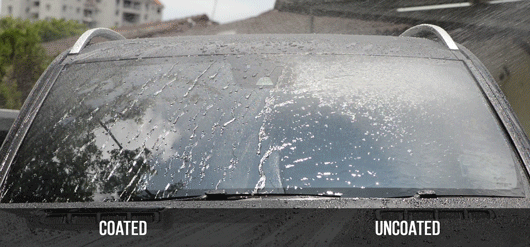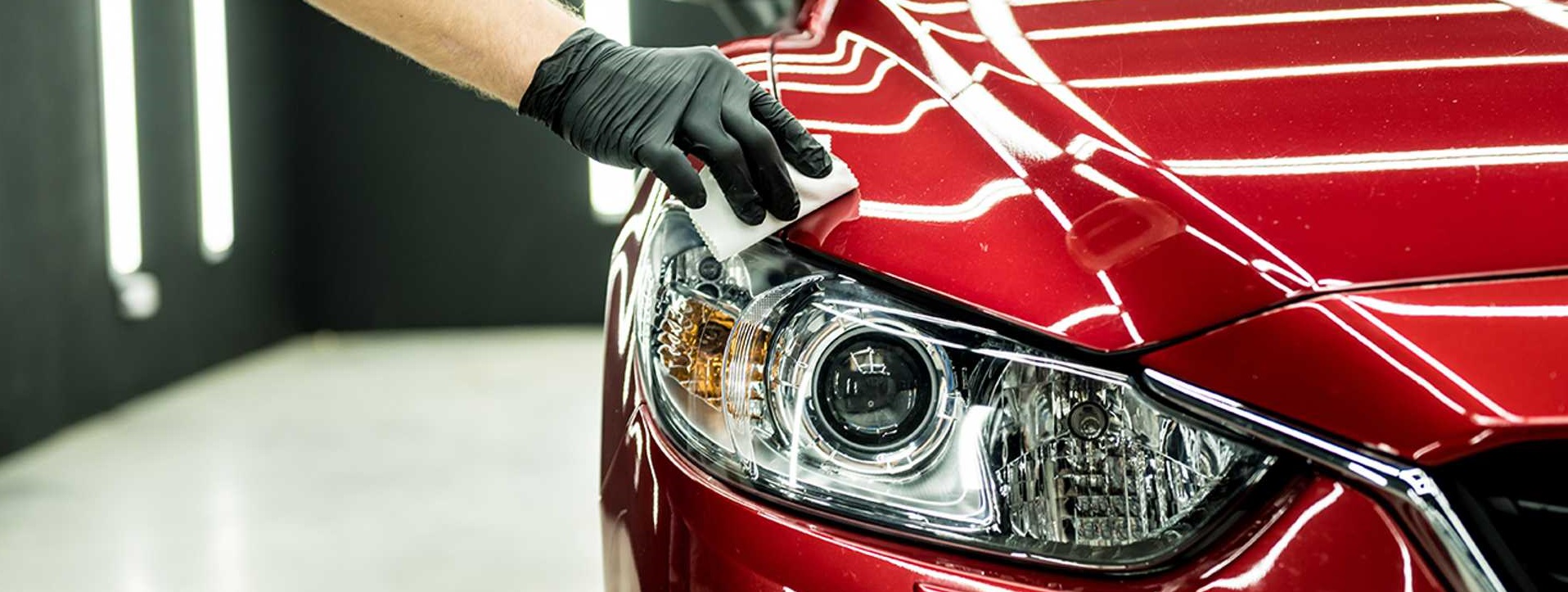Why Ceramic Finish Is the Ultimate Solution for a Flawless Complete
Ceramic layer has actually become a leading service for those looking for a remarkable coating for their vehicles, thanks to its impressive sturdiness and safety functions. This advanced liquid polymer not only bonds effortlessly with factory paint however also provides an awesome obstacle against typical dangers such as scratches, UV rays, and ecological toxins. Its hydrophobic homes simplify upkeep while boosting aesthetic allure. Understanding how this innovation compares to traditional approaches and discovering its application nuances can reveal even more about its value. What elements really set ceramic covering apart?
What Is Ceramic Layer?

When applied appropriately, ceramic finishing produces a hydrophobic surface area that fends off water and dust, making it simpler to preserve and clean. Unlike traditional waxes or sealers, which normally offer short-term security, ceramic layers can last for a number of years, depending upon the item high quality and application method. The process of using ceramic finishing needs careful prep work, consisting of extensive cleansing and in some cases paint adjustment, to ensure optimal bonding and effectiveness.
Ceramic coatings are not restricted to auto surface areas; they can also be utilized on different materials, including glass, metal, and plastics, providing a versatile solution for enhancing defense. Overall, ceramic finishing represents a significant development in surface protection technology, integrating both visual and functional benefits for a vast array of applications.
Advantages of Ceramic Finish
While numerous surface area security options exist, the benefits of ceramic finish stick out due to its distinct residential or commercial properties and long-lasting efficiency. One of the main benefits is its extraordinary resilience. Ceramic Coating Philadelphia. Unlike traditional wax or sealants that need constant reapplication, ceramic layers give a resilient layer that can last for numerous years, dramatically reducing maintenance initiatives
Another noteworthy advantage is enhanced security versus ecological pollutants. Ceramic coverings produce a hydrophobic surface that drives away water, dust, and various toxins, making it simpler to clean up. This feature not just maintains the vehicle's appearance but also lessens the danger of corrosion and oxidation, particularly in rough climate condition.
Furthermore, ceramic finishings offer superior resistance to UV rays, preventing fading and degradation of paint over time. This UV protection is vital for keeping the aesthetic worth of surface areas and vehicles subjected to guide sunshine.
In addition, the shiny coating achieved with ceramic finish boosts the general aesthetic charm, providing surface areas a showroom-quality shine. Generally, ceramic finishings represent a significant development in surface security technology, providing long-lasting advantages that deal with both functional and aesthetic demands.
How It Works
Recognizing the science behind ceramic layers reveals exactly how they give such exceptional security and long life. At its core, click this site a ceramic layer is a liquid polymer that chemically bonds with the lorry's factory paint. This bonding produces a safety layer that is both oleophobic and hydrophobic, repelling water, dust, and oil. The key component of most ceramic coverings is silicon dioxide (SiO2), which is acquired from quartz. This compound contributes to the finishing's firmness and resistance to scrapes, UV rays, and environmental impurities.
The application process entails several actions, consisting of surface preparation, which is important to attaining ideal adhesion. Once used, a knockout post the coating undergoes a healing process, during which it solidifies and forms a semi-permanent bond with the paint surface area. This bond is what distinguishes ceramic finishes from standard waxes and sealants, providing a longer-lasting protective barrier that can endure for years.
Furthermore, the thickness of the layer can boost its safety top qualities, ensuring that it can hold up against rough problems. Ultimately, the science of ceramic coatings integrates innovative materials with innovative application methods to supply an unparalleled level of defense and visual enhancement for vehicles.
Comparison With Conventional Techniques
The advantages of ceramic coverings end up being particularly noticeable when compared to typical paint defense techniques such as waxes and sealers. While waxes use a momentary sparkle, typically lasting a few weeks to a pair of months, ceramic coatings offer a lasting safety layer that can withstand for several years. This sturdiness considerably decreases the frequency of reapplication, making ceramic coverings a much more economical option with time.
Furthermore, traditional techniques frequently require extensive prep work and multiple applications to achieve a sufficient level of security. In contrast, ceramic layers bond at a molecular level with the vehicle's surface, producing a durable shield against environmental contaminants like UV rays, acid rainfall, and road salts. This bond improves the automobile's resistance to scratches and swirl marks, which prevail with typical waxes and sealants.
Additionally, the hydrophobic properties of ceramic finishings fend off water and dust, causing much easier cleaning and upkeep. In contrast, wax and sealant-treated surface areas can bring in grime, necessitating more regular cleaning - Ceramic Coating Philadelphia. On the whole, ceramic coverings not only offer superior security but likewise deliver a much more visually attractive and long-lasting surface, developing them as the recommended option for discerning lorry proprietors
Application and Maintenance Tips

Utilizing a foam applicator, use the layer in little areas, complying with the maker's standards pertaining to density and overlap. Permit adequate treating time between layers, generally 24 hr, to make sure appropriate bonding. After application, it is critical to avoid exposure to water or harsh components for at least a week to allow the finish to fully cure.
For maintenance, wash the lorry routinely with pH-balanced soaps and avoid rough products. Touchless auto cleans are recommended to lessen scraping. Furthermore, utilizing a ceramic upkeep spray can enhance the coating's hydrophobic residential properties and longevity. Routine inspections for any signs of wear will certainly aid preserve the coating's integrity and protect that beautiful surface.
Verdict
In conclusion, ceramic finishing arises as a remarkable option for accomplishing a perfect auto coating. By forming a durable bond with factory paint, ceramic layer successfully shields versus scrapes, UV rays, and ecological impurities.
